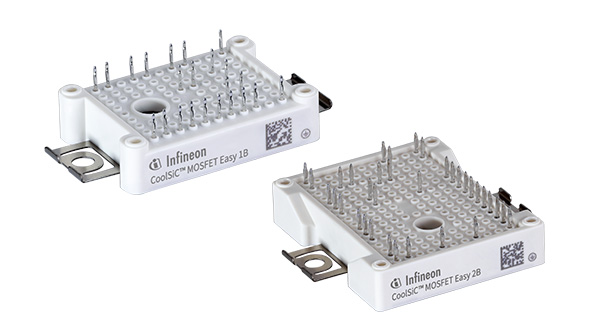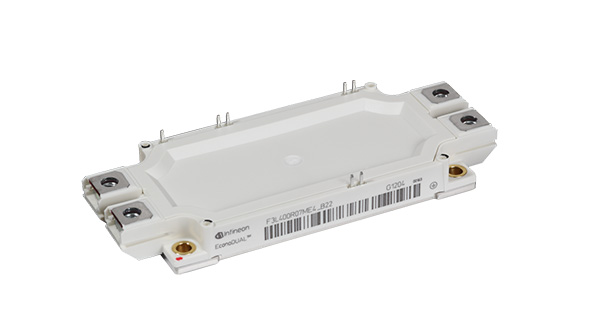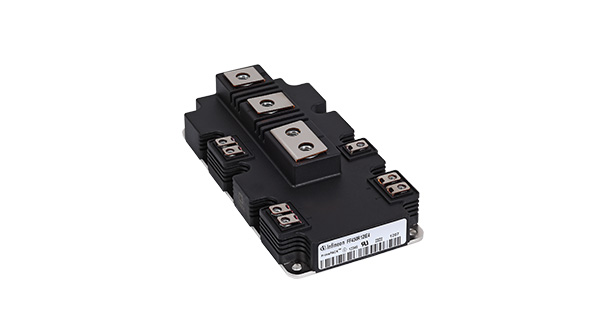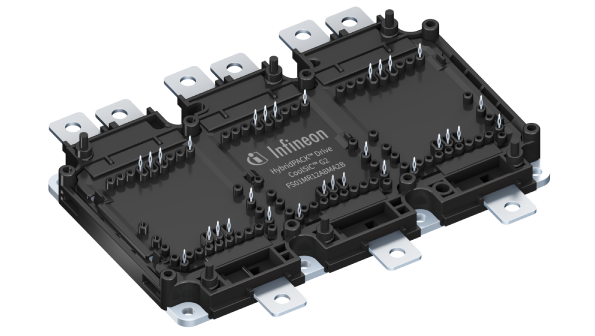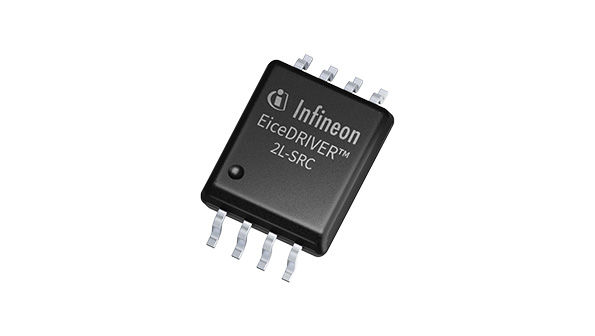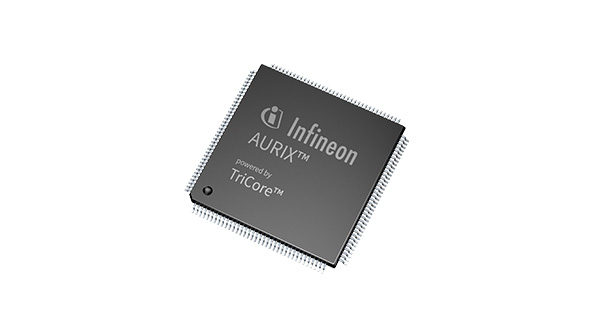Commercial, construction and agricultural vehicles (CAV)
Pioneering the commercial vehicle transformation: Infineon's scalable and efficient system solutions
Please choose a subcategory
Collapse all subcategories Expand all subcategories- Hybrid electric solutions for construction, commercial and agricultural vehicles
- EPS with active steering for 24V commercial vehicles
- Fail operational EPS for 24V commercial vehicles
- Valve control for trucks and agricultural vehicles
- Auxiliary applications for trucks and agricultural vehicles
- Multi-purpose camera
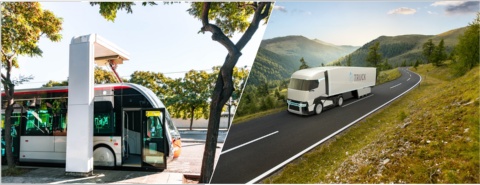
At Infineon, we strive to be the semiconductor leader in system solutions for the commercial vehicle sector, offering scalable, reliable, and efficient solutions while minimizing the Total Cost of Ownership (TCO). Our products and systems are designed to meet the highest quality standards, complying with automotive (AQG324) and industrial (IEC) qualifications.
Our broad portfolio provides comprehensive solutions, including inverters, battery management systems, on-board chargers, and high-voltage DC-DC converters, offering a one-stop shop for our customers.
Together let’s drive the commercial vehicle revolution towards decarbonization and digitalization.
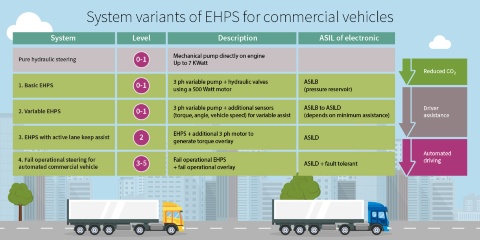
24 V EPS with active steering for CAV
24 V Fail operational EPS for CAV
Primary power distribution center
Infineon’s scalable CAV-dedicated solutions enable seamless data integration, accurate diagnostics and advanced control for optimal vehicle safety, productivity and energy efficiency.
Driving assistance functions like lane keep assist, lane centering function or lane-keep steering function, not only ensure safer operation, reduce the cost of total ownership, but also reduce CO2 emissions.
The EHPS accurately supplies oil and pressure to hydraulic steering systems on demand. It communicates with sensors through CAN bus, transmitting data on actual steering wheel position and torque, as well as vehicle speed. Besides, the data from cameras and radars trigger failure detection and isolation with resettable protection, all in less than 100 µs.
With seamless data integration, and fast isolation, Infineon support you with the major 3 trends: CO2 reduction, upcoming level 3 and level 4 automated driving stages, as well as the reduction of insurance costs.
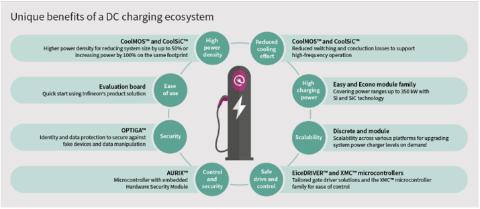
Battery management system (BMS)
With the broadest and scalable EV charging portfolio in the market, Infineon delivers a seamless charging experience and unlocks optimal battery performance, all while meeting rigorous demand for high power density at a low system cost with durability.
To unleash the potential of electrification, our CAV-dedicated onboard charger (OBC) supports reliable 43 kW fast charging and an extended lifespan of up to 1.5 million kilometres with high scalability. Paired with our automotive battery management system (BMS), your battery is accurately monitored, protected, and optimized. Besides, our configurable high voltage solid state relay provides fast switch-off in less than 1µs, inbuilt diagnostic capability, and comprehensive flexibility, helping you to comply with ISO5474-3.
Furthermore, our scalable DC offboard charging delivers up to 3.5 MW, with wireless charging of inductive and resonant systems, Infineon enables the charging infrastructure to satisfy commercial needs and accommodate future expansion.

Electric vehicle thermal management
Mechanical power-take-off (mPTO)
Infineon offers a reliable and scalable CAV-dedicated high voltage portfolio, supporting various motor types and battery voltage from 800 V and beyond. By having efficient and compact system solutions all in one source, Infineon helps you to reduce total costs of ownership (TCO) and time-to-market.
The traction inverter has the most decisive impact on an EV’s range and performance. It should minimize switching losses, maximize thermal efficiency, and recharge the battery through regenerative braking.
Our highly-efficient power modules and discrete solutions also facilitate efficient bi-directional energy flow between high-voltage and low-voltage sub-networks. We enable seamless power management and distribution within the vehicle.
With expertise in Si-IGBT and SiC, from microcontrollers, to accurate sensors and powerful switches, Infineon’s scalable solutions ensure optimal efficiency, safety, robustness, and extended battery life.
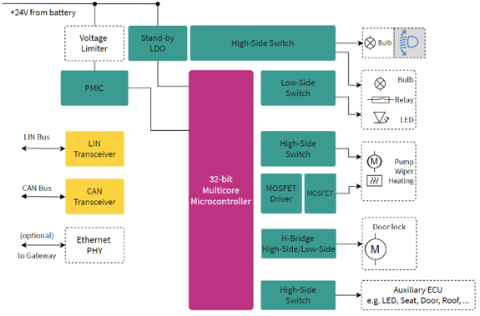
24 V Body control module (BCM) for CAV
Low voltage motor control for CAV
Infineon provides highly integrated functionality and scalable solutions to enable commercial vehicle’s ever-expanding list of functions with ever-smaller board space, achieving lower design costs and unlocking the full potential of your CAV.
Our comprehensive solution for 24 V body ECUs, maximizes design flexibility, by integrating superior diagnostics and protection features with the "Limp Home" functional safety concept on a single board.
No matter it’s brushless, brushed, or unidirectional DC motor, Infineon’s low voltage motor control unit delivers efficient integrated and discrete for both 12 V and 24 V systems, and of course equipped with diagnostic protective functions.
Paired with Infineon’s hydraulic and pneumatic valve control systems, our broad range of body application ensures precision, robustness and adaptability in harsh environments while being cost-effective.
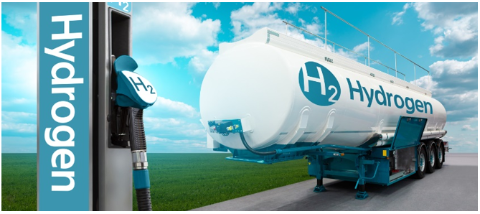
Fuel-Cell Electric Vehicle (FCEV) Drivetrain System
Infineon supports next-generation fuel-cell electric vehicle drivetrain systems with our expertise, partner network and one stop shop, enabling you to leverage synergies and optimize system efficiency, economy of scale and time to market.
Hydrogen fuel-cell stack is the core of electric vehicles fuel-cell technology. Our power semiconductor solutions and smart control ICs enable multi-target optimization for system cost reduction, increased power density, higher application efficiency, and modular design.
With fuel cell-dedicated software and design house partners, reference designs, boards, and layout resources, Infineon assists you in meeting current and future environmental legislation and customer requirements.
Experience our interactive etruck and find all information for your CAV design requirements
New white paper about electrified heavy-duty vehicles

Electrification as a key to reducing emissions and improvements in energy storage technology and developments in supplemental infrastructure enables the fully autonomous long-haul operation. Standardization for autonomous trucks, busses, and in-city delivery vehicles needs to improve to support cross-border or even cross-continental interoperability.
This whitepaper covers the electrification of heavy-duty vehicles focusing on battery, charging, drive train, and power semiconductor aspects. Learn more about the technical bits and pieces to solve this global puzzle in this white paper.
Podcast4Engineers: Electric commercial, construction and agricultural vehicles (eCAV)

E-mobility is not only a hot topic but also a broad one. Our experts paint the picture of electromobility in our podcast series, ranging from toy-sized hoverboards to oversized mining trucks and many vehicle applications in between. Learn how Infineon is helping to make the world of transportation easier, safer and greener.
Three million of medium and heavy trucks and four hundred thousand busses are produced every year! This is definitely a huge market!
Do you know what are Infineon’s goals in terms of Commercial, Construction and Agriculture Vehicles, that is CAV?
This training, which is organized into 3 modules, provides an application overview of Commercial, Construction and Agricultural vehicles!
In this first module we focus on high-voltage applications of CAV.
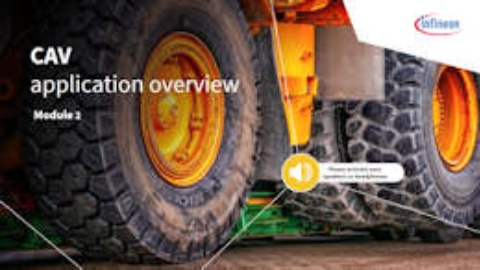
Three million of medium and heavy trucks and four hundred thousand busses are produced every year!
Do you know what are Infineon’s goals in terms of Commercial, Construction and Agriculture Vehicles, that is CAV?
In this training module we focus on low voltage domain of CAV.
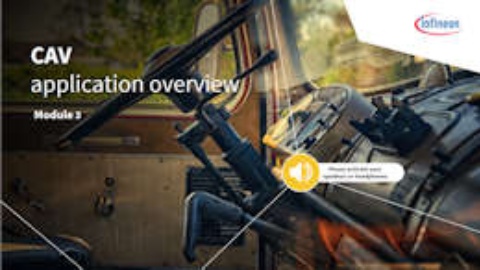
Do you know what are Infineon’s goals in terms of Commercial, Construction and Agriculture Vehicles, that is CAV?
This training, which is organized into 3 modules, provides an application overview of Commercial, Construction and Agricultural vehicles!
In this third module, we focus on a particular application: eBuses!

In this training, you will:
- learn about the market trend “Electrification” in commercial, construction, and agricultural vehicles (CAV)
- understand the importance of customer enablement and how Infineon serves eCAV

In this training you will:
- Learn about the main reasons for the forklift market growth and the main forklift applications and requirements
- Discover why Infineon is your one-stop-shop semiconductor supplier
This training will introduce you to Infineon’s IGBT 750 V EDT2 DuoPack TO-247PLUS surface-mounted device!

In this training you will:
- Identify Infineon’s 24-volt Intelligent Power Distribution portfolio with its different families and their features
- Know the applications where these devices are the best fit and where to find support material to help you design-in your application with Infineon’s 24-volt high-side and low-side switches

Learn more about PrimePACK™ for Commercial, Construction, and Agricultural Vehicle applications in our training.
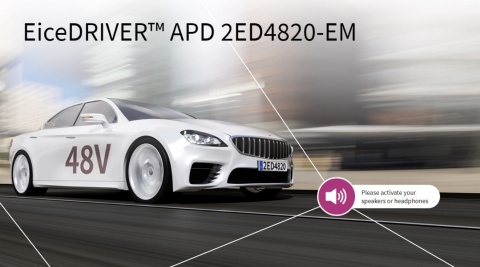
- Get an overview of the main feature set of this 48-volt capable EiceDRIVER™.
- Understand its different integrated protection mechanisms.
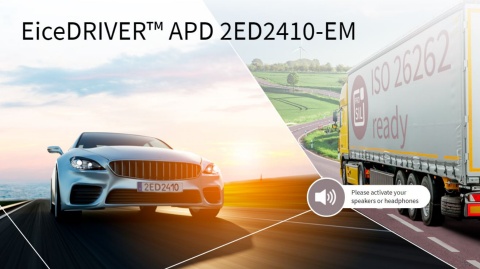
- Get an overview of the main features of this flexible EiceDRIVER™ device
- Understand its different integrated protection mechanisms
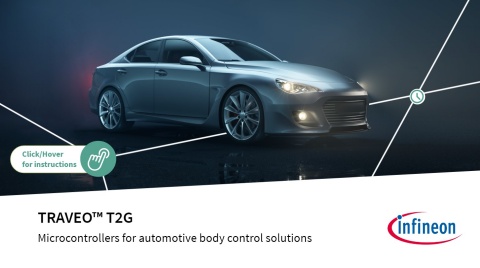
By the end of this training, you will be able to
- Describe the main features of Infineon’s TRAVEO™ T2G microcontrollers
- Recognize the different variants that make up this family of products
Webinars
With proven expertise and a comprehensive portfolio of robust, high-quality control and power semiconductor solutions, Infineon helps you engineer successful and reliable designs for commercial, construction and agricultural vehicles.
Key Takeaways:
1.Understand how Infineon responds to the trends in the CAV market
2.Get an overview of different applications: Main drive, auxiliaries
3.Learn about the system solutions with power modules, gate drivers, microcontrollers AURIX™, sensors, and more
Gain a deeper insight into Infineon's sensors, microcontrollers and memories that serve one of the megatrends in the commercial, construction and agricultural vehicle (CAV) market: electrification.
Key Takeaways:
1. Learn how Infineon responds to the trends and challenges in the electrification of the CAV market
2. Explore Infineon's power modules for hybrid and electric solutions as well as our sense and actuate portfolio
3. Examine how we serve applications with increasing demand of semiconductors in the industry

